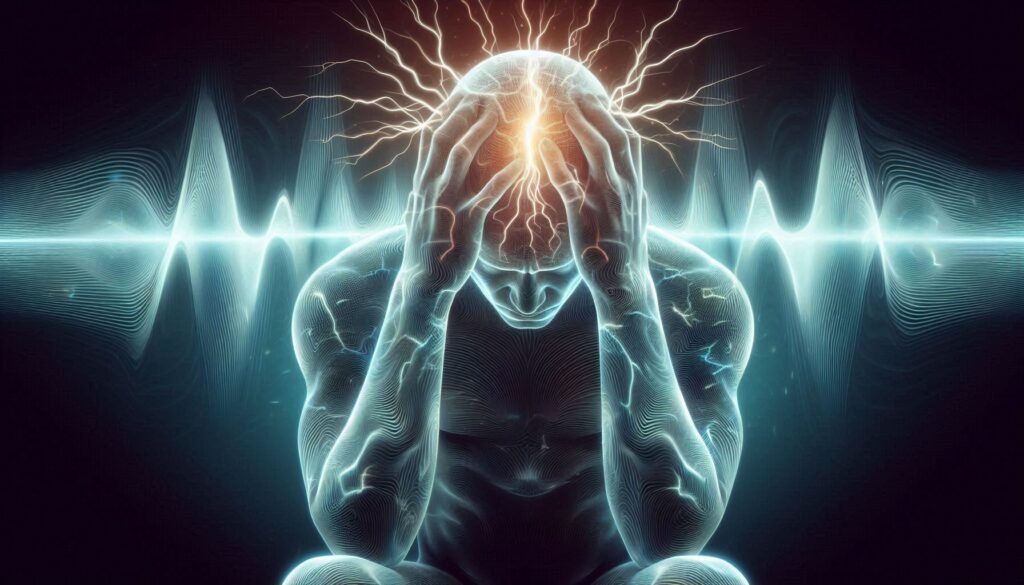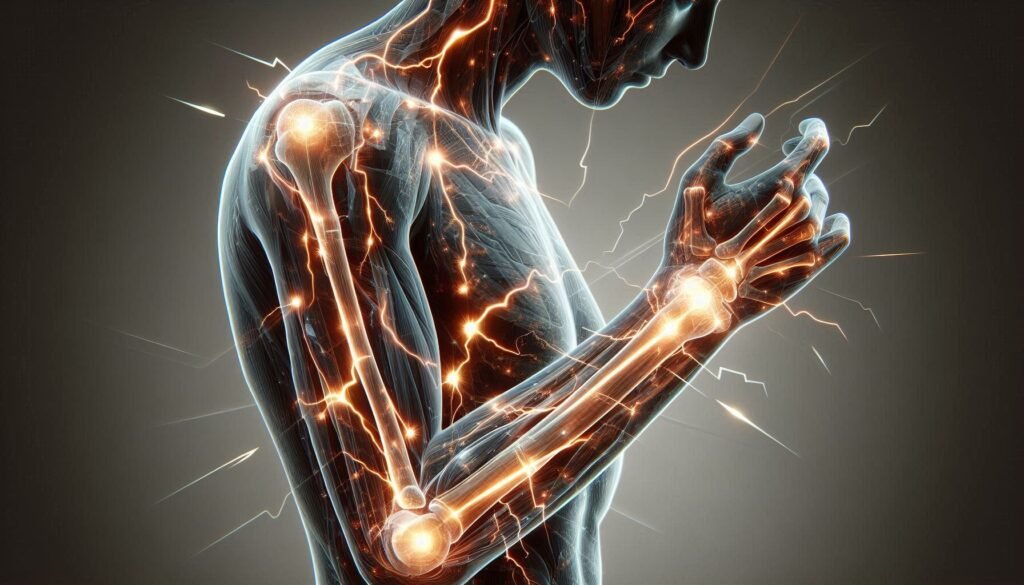Migraines are often dismissed as just severe headaches, but they can be so much more. For millions of sufferers, these debilitating episodes come with a range of distressing symptoms beyond head pain. One lesser-known yet significant aspect is the occurrence of paresthesia—those strange tingling or numb sensations that can accompany migraine attacks. This surprising link between migraines and paresthesia might leave many wondering how closely intertwined these seemingly distinct experiences really are.
Understanding this connection not only sheds light on the complexity of migraines but also opens doors to better management strategies for those affected. If you’ve ever experienced both conditions simultaneously or know someone who has, you’re certainly not alone in your quest for answers. Let’s delve deeper into this intriguing relationship and explore what it means for migraine sufferers everywhere.

Understanding Migraines: More Than Just Headaches
Migraines are complex neurological events that extend far beyond the typical headache. They affect around 12% of the population, impacting daily life and productivity for many. Unlike tension headaches, migraines can include a multitude of symptoms that vary from person to person.
The hallmark of a migraine is its debilitating pain, often described as throbbing or pulsating. This pain typically localizes on one side of the head but can shift during an episode. Migraines may last anywhere from four hours to three days if untreated.
In addition to severe pain, sufferers frequently encounter nausea, vomiting, and extreme sensitivity to light and sound. These accompanying symptoms contribute significantly to the overall experience of a migraine attack.
Understanding migraines requires recognizing their multifaceted nature. They involve neurological changes in brain function rather than merely being an isolated physical ailment. As such, effective management strategies must address this complexity for those affected by these painful episodes.
The Phases of a Migraine: Where Paresthesia Fits In
Migraines unfold in distinct phases, each presenting unique symptoms and experiences. Understanding these phases is crucial for recognizing the surprising link between migraines and paresthesia. The cycle usually begins with a prodrome phase, where individuals may experience mood changes, food cravings, or fatigue.
Following this is the aura phase, which can include visual disturbances like flashing lights or blind spots. It’s also during this stage that sensory disruptions occur—many report sensations resembling tingling or numbness in various body parts. This paresthesia can be alarming but often signals an impending headache.
Next comes the actual headache phase characterized by intense pain that can last hours to days. During this time, some might still feel residual paresthetic effects from the aura phase. There’s a postdrome period where lingering fatigue and sensitivity are common.
Recognizing how these phases interconnect helps those affected understand their condition better, especially when it comes to managing associated symptoms like paresthesia.
Migraine Aura: Visual and Sensory Disturbances Including Paresthesia
Migraine aura is a fascinating phenomenon experienced by many migraine sufferers. It typically occurs just before the onset of a headache and can include various visual disturbances. Many report seeing flashing lights, zigzag patterns, or even temporary blindness in one eye. These symptoms create a unique sensory experience that signals an impending migraine.
However, the aura isn’t limited to visual changes; it also encompasses sensory disturbances such as paresthesia. Paresthesia refers to sensations like tingling or numbness, often felt in the face or extremities. For those who experience these symptoms during an aura phase, it can be alarming and disorienting.
The connection between migraines and paresthesia lies within neurological pathways affected during an attack. Changes in brain activity lead to disruptions in how we perceive sensory information. This explains why some individuals may feel both visual distortions and unusual sensations simultaneously.
Recognizing these signs is crucial for effective management of migraines. Understanding your body’s responses can help you better prepare for potential attacks and seek timely treatment when needed.
Hemiplegic Migraines: A Rare Form with Pronounced Paresthesia
Hemiplegic migraines are a rare and severe type of migraine that can bring on significant symptoms, including pronounced paresthesia. Unlike typical migraines, they often involve temporary paralysis or weakness on one side of the body. This neurological manifestation can be alarming for those experiencing it.
The aura associated with hemiplegic migraines may include sensory disturbances such as tingling or numbness. These sensations typically precede the headache phase but can also occur alongside it. The presence of these symptoms is what sets hemiplegic migraines apart from other types.
Genetics play a crucial role in this condition, with some individuals having inherited forms linked to specific gene mutations. It’s important to note that while hemiplegic migraines are rare, their impact on quality of life can be profound.
Diagnosis and management require careful consideration by healthcare professionals familiar with this complex disorder. Treatment approaches often focus on alleviating both migraine attacks and associated neurological symptoms like paresthesia.
The Role of Cortical Spreading Depression in Migraine-Related Paresthesia
Cortical spreading depression (CSD) is a phenomenon that plays a significant role in the pathophysiology of migraines. It involves a wave of depolarization followed by suppression of neural activity, moving across the cortex. This process can trigger various symptoms associated with migraines, including paresthesia.
During an episode of CSD, neurons become highly excitable and then rapidly depressed. This fluctuation in brain activity affects sensory pathways, leading to sensations such as tingling or numbness. Paresthesia often manifests on one side of the body during these attacks.
Researchers believe that this disturbance in cortical function creates a cascade effect, influencing blood flow and nerve signaling. As a result, individuals may experience not only intense headaches but also sensory disturbances linked to their migraine episodes.
Understanding CSD’s role helps explain why some migraine sufferers report paresthesia as part of their symptomatology. It highlights the complex interplay between neurological events and the body’s perception during migraines.
Differentiating Migraine-Induced Paresthesia from Other Causes
Differentiating migraine-induced paresthesia from other causes can be challenging due to the variety of symptoms that mimic each other. Paresthesia, often described as tingling or numbness, may stem from numerous conditions such as neuropathy, multiple sclerosis (MS), or transient ischemic attacks (TIAs). Understanding the context of these sensations is crucial.
Typically, migraine-related paresthesia occurs in conjunction with a headache or aura. Patients may experience this sensation on one side of their body during an episode. In contrast, paresthesia linked to other neurological disorders may present without headaches and could affect both sides simultaneously.
Medical history plays a significant role in differentiating these conditions. A thorough discussion about symptom onset, duration, and accompanying features helps healthcare providers pinpoint the cause more accurately. Diagnostic tests like MRI scans or nerve conduction studies might also be employed for clarity.
Awareness of specific patterns associated with migraines aids in distinguishing them from unrelated issues. This understanding allows for more effective management strategies tailored to individual needs.
Triggers and Risk Factors for Migraine-Associated Paresthesia
Migraine-associated paresthesia can be influenced by various triggers and risk factors. Understanding these elements is crucial for effective management. Common triggers include stress, hormonal changes, certain foods, and dehydration. Identifying personal triggers often requires keeping a detailed diary of migraine episodes.
Lifestyle factors also play a significant role. Lack of sleep or irregular sleep patterns can increase susceptibility to migraines and associated symptoms like paresthesia. Likewise, excessive caffeine intake may provoke attacks in some individuals while others find relief with small amounts.
Genetics contribute to the likelihood of experiencing migraines with sensory disturbances. If you have family members who suffer from similar conditions, your risk may be higher due to inherited traits.
Environmental influences shouldn’t be overlooked either. Weather changes, bright lights, or strong odors can act as catalysts for migraines accompanied by paresthesia in sensitive individuals. Awareness of these factors helps in crafting an effective prevention strategy tailored to personal needs.
Diagnosing Migraine-Related Paresthesia: Challenges and Approaches
Diagnosing migraine-related paresthesia can be complex. Many patients report unusual sensations, but these symptoms often overlap with other conditions. This makes it challenging for healthcare providers to pinpoint the exact cause of paresthesia.
A thorough medical history is essential in this process. Doctors typically ask about the frequency and duration of migraines, as well as any accompanying symptoms like visual disturbances or weakness. These details help establish a clearer picture of an individual’s condition.
Neurological exams play a crucial role too. Physicians may perform tests to assess sensory function and motor skills. These evaluations help rule out other neurological disorders that could mimic migraine-related symptoms.
Imaging studies such as MRI or CT scans are sometimes necessary to exclude structural abnormalities in the brain. While diagnosing migraine-associated paresthesia may involve several steps, understanding each aspect can lead to more effective management strategies tailored for each patient’s needs.
Treatment Options: Managing Both Migraines and Associated Paresthesia
Managing migraines and associated paresthesia often requires a multi-faceted approach. Medications play a crucial role in treatment. Patients may benefit from both acute treatments, like triptans, which help relieve migraine attacks, and preventative options such as beta-blockers or anticonvulsants.
Non-pharmacological strategies can also be effective. Cognitive-behavioral therapy (CBT) is one method that helps individuals manage stress—a common trigger for migraines. Relaxation techniques like mindfulness meditation have shown promise in reducing the frequency of attacks as well.
Lifestyle modifications are essential too. Staying hydrated, maintaining regular sleep patterns, and avoiding known triggers can significantly lessen migraine occurrences and their accompanying symptoms of paresthesia.
For some patients, physical therapy might offer relief by addressing tension-related issues contributing to headaches and sensory disturbances. A tailored treatment plan crafted with healthcare providers ensures comprehensive management for those experiencing this surprising link between migraines and paresthesia.
Living with Migraine-Induced Paresthesia: Coping Strategies and Outlook
Living with migraine-induced paresthesia can be challenging, but several coping strategies can provide relief and improve quality of life. First, keeping a detailed headache diary is crucial. Documenting the frequency, intensity, duration of migraines, and any associated symptoms like paresthesia helps identify patterns and triggers.
Lifestyle modifications play a significant role as well. Regular sleep schedules, balanced diets rich in magnesium and omega-3 fatty acids, and staying hydrated may reduce the severity or frequency of attacks. Engaging in stress-reducing activities such as yoga or meditation can also help manage both migraines and their sensory side effects.
Medication management is key for many individuals. Some find relief through over-the-counter pain relievers or prescribed medications that target both migraines and associated symptoms like paresthesia. It’s important to collaborate with healthcare professionals to find an effective treatment plan tailored to individual needs.
Support groups offer another valuable resource for those living with this condition. Sharing experiences with others who understand the struggles can provide emotional support that makes dealing with these neurological challenges more manageable.
While there may not yet be a cure for migraine-related paresthesia, understanding its connection to migraines empowers patients to take proactive steps toward managing their health effectively. Adopting a comprehensive approach—combining lifestyle changes with medical advice—can lead to better outcomes overall.


